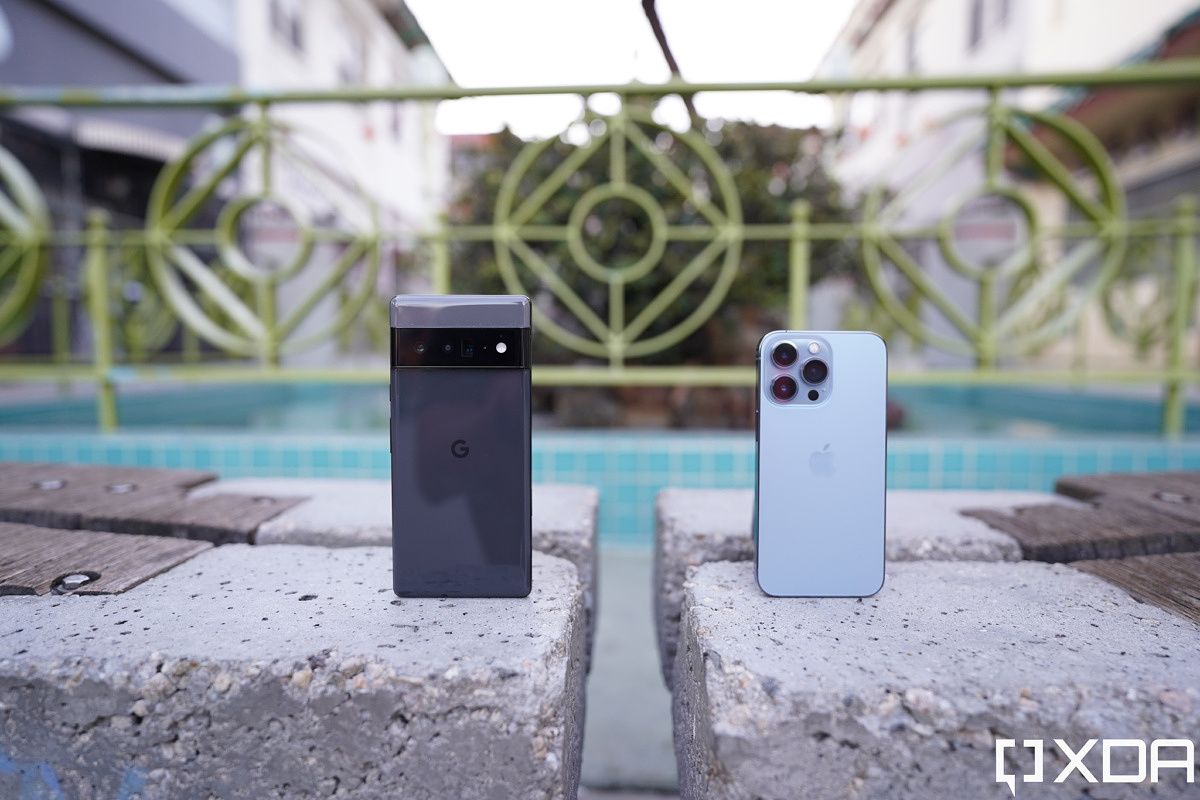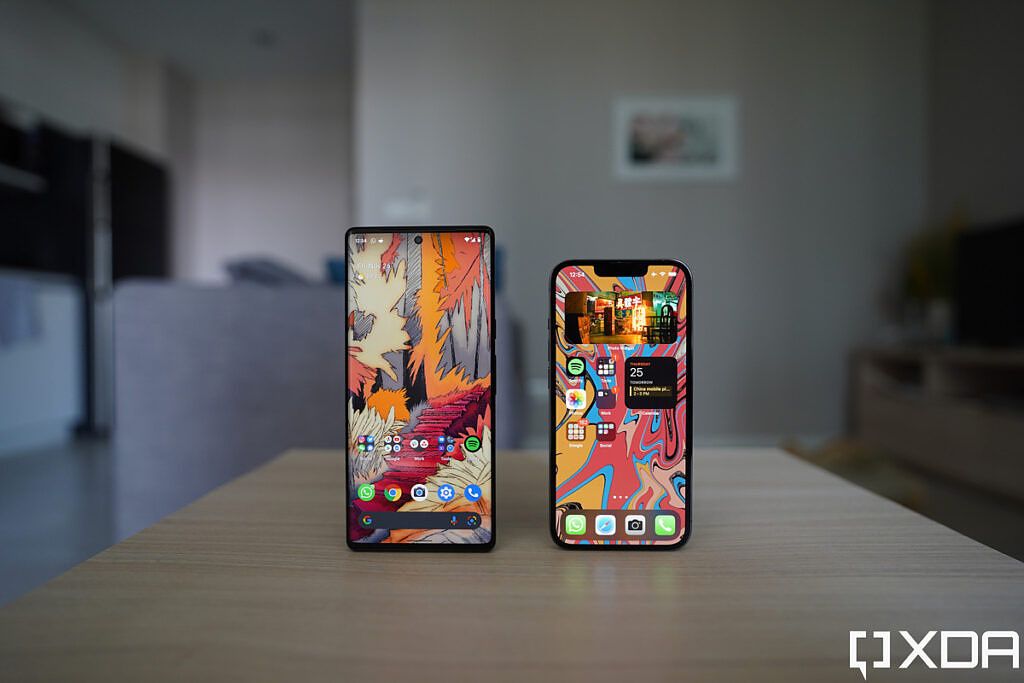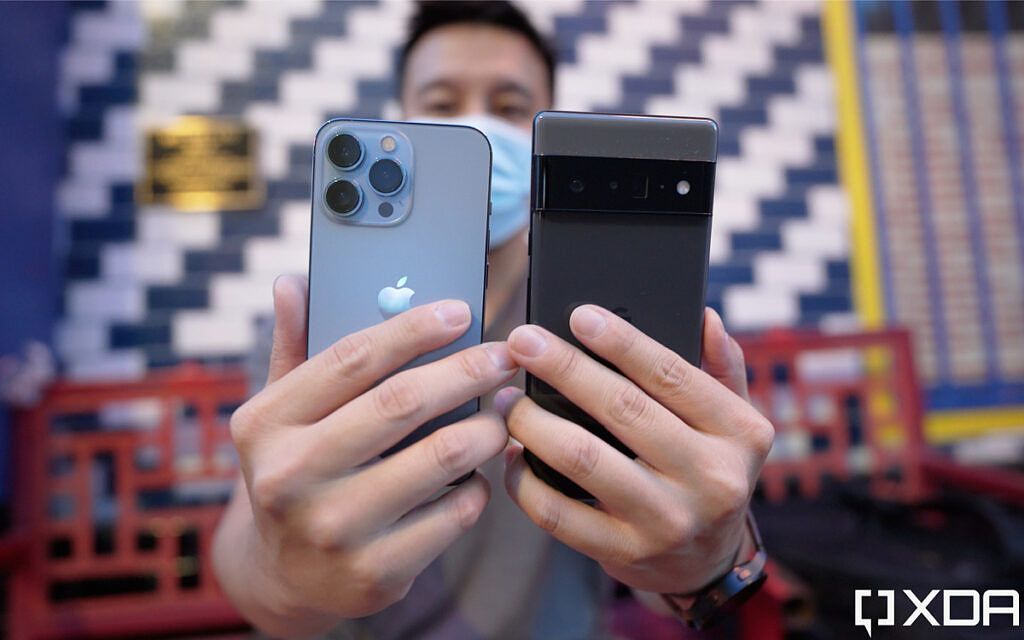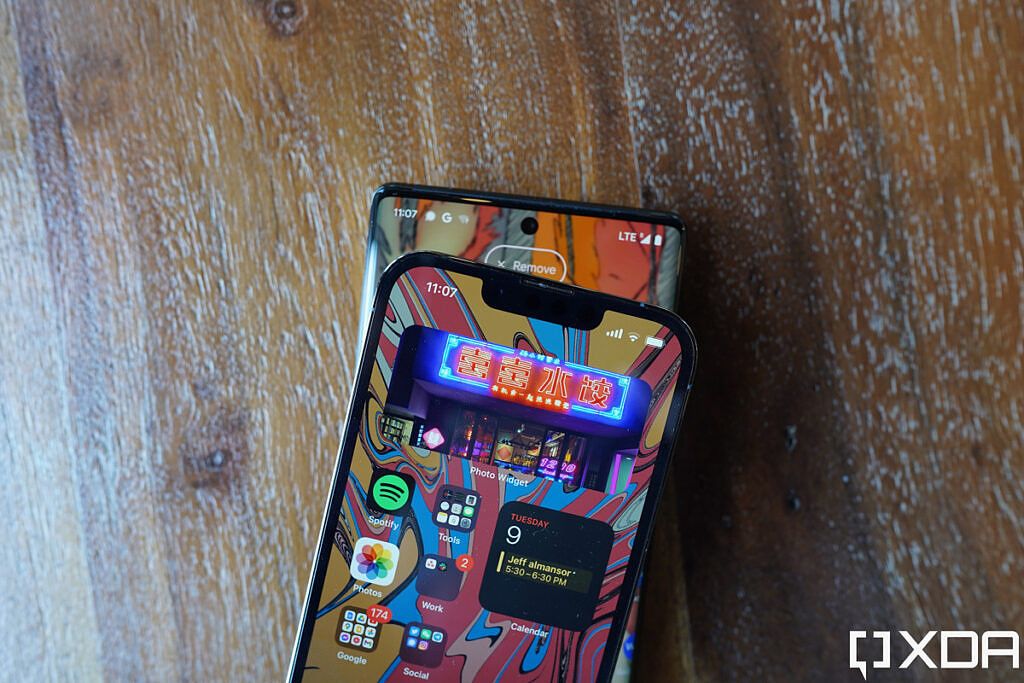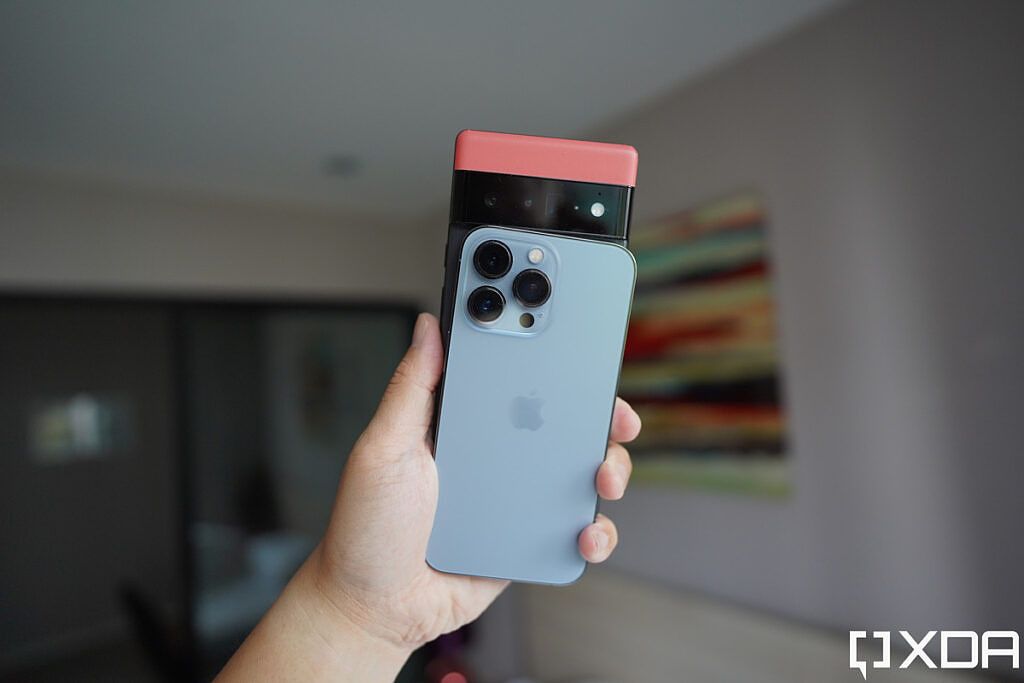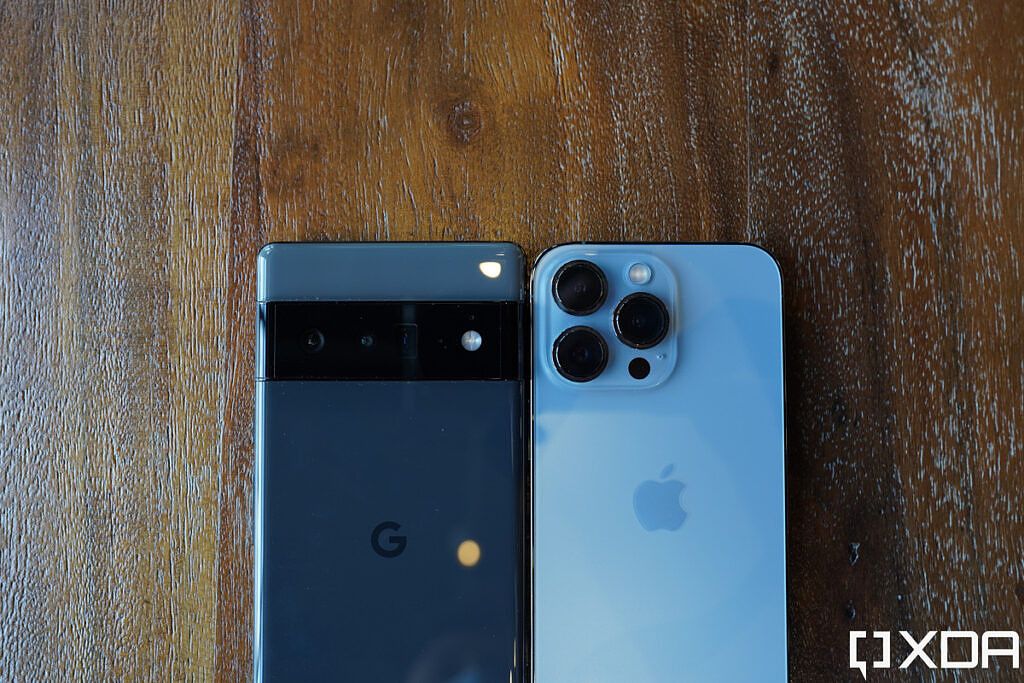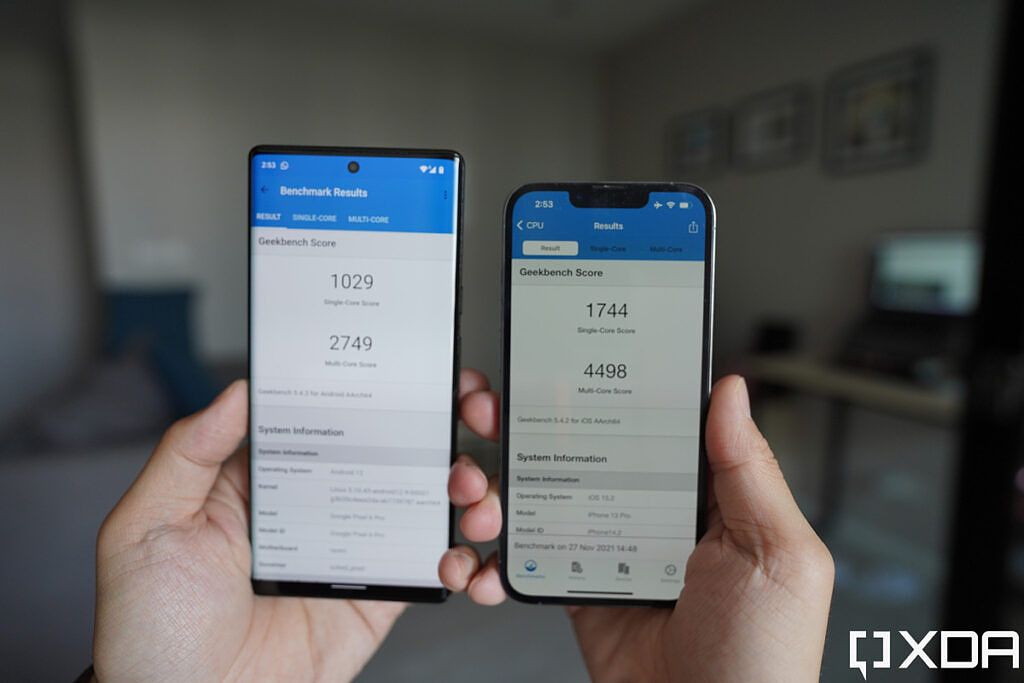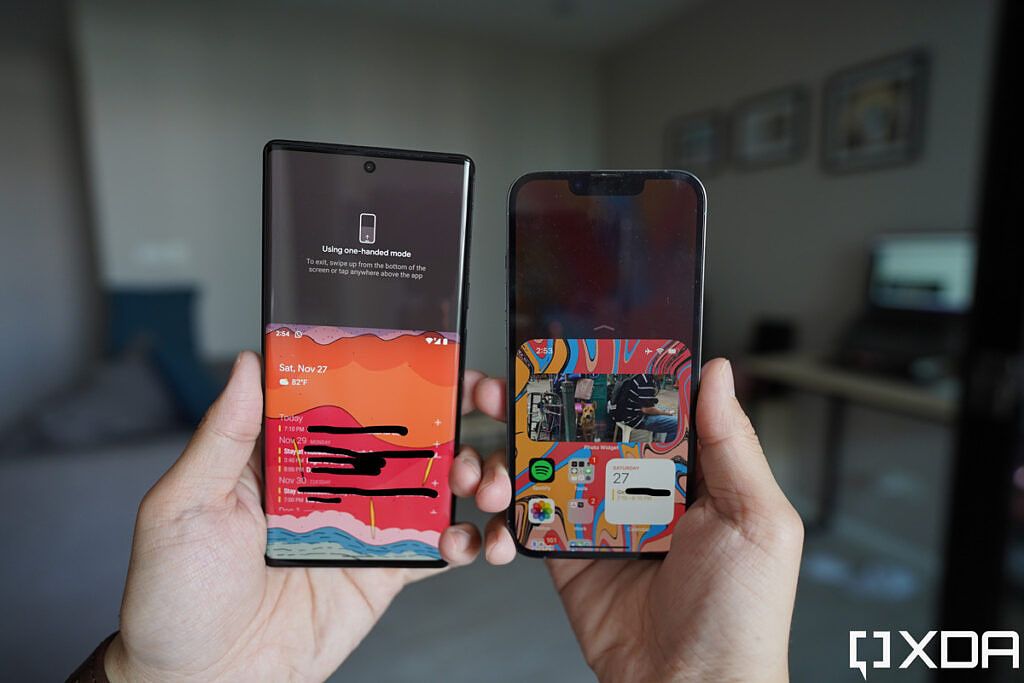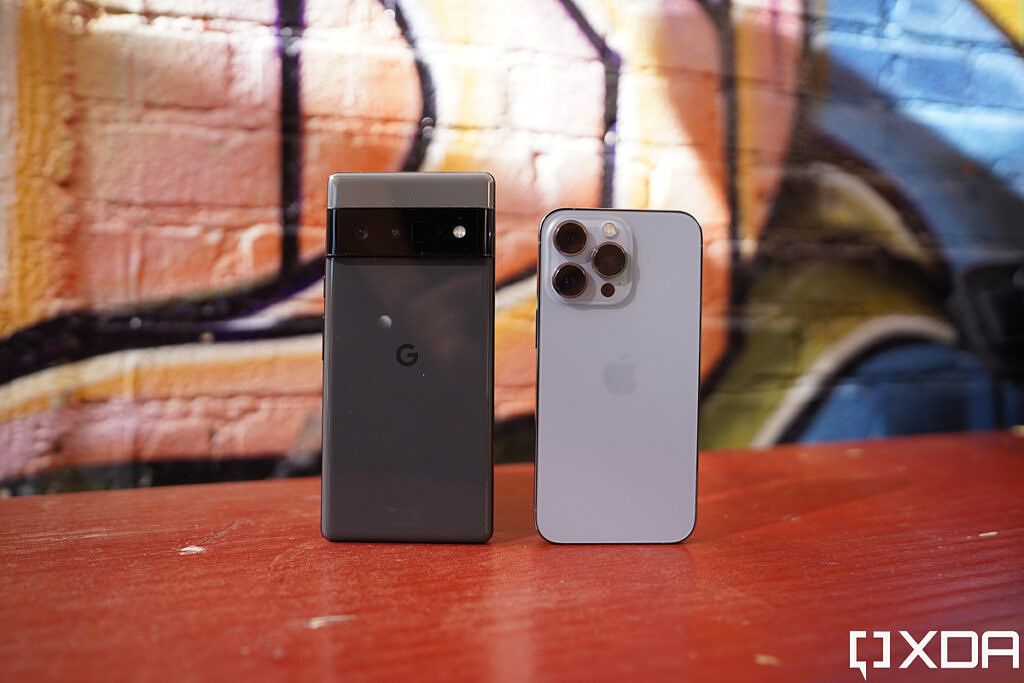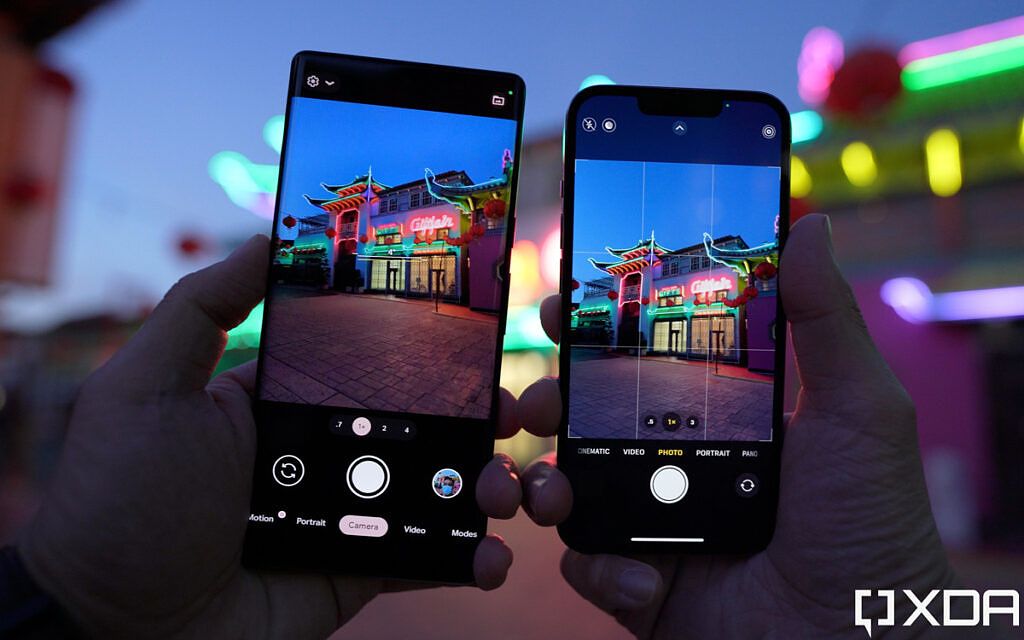The Google Pixel has always been designed to be the "iPhone of Android," and the Pixel 6 Pro comes the closest to living up to that goal yet. In addition to sporting its own silicon for the first time, the Pixel 6 Pro also sees further software tweaks on top of Android 12 that make it feel different from typical Android devices -- and dare we say it, more like an iOS. The iPhone 13 Pro, meanwhile, is a somewhat iterative update over last year's iPhone 12 Pro, with most of the big upgrades coming in hardware components that Android phones have offered for years, like larger camera sensors and a high refresh display.
The iPhone vs Pixel debate is a fun one to have for tech geeks every year, but this is probably the first year where this debate matters (just slightly, but still) to the average consumer.
My colleague Adam Conway has already reviewed the Pixel 6 Pro thoroughly, while I also reviewed the iPhone 13 Pro last month. I also tested the two cameras against each other in a Pixel 6 Pro vs iPhone 13 Pro camera shootout. This piece will focus on comparing the two flagships with a broader overview.
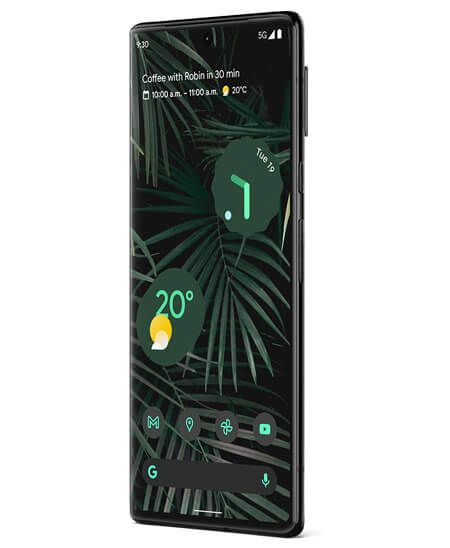
Google Pixel 6 Pro
The Pixel 6 Pro is the larger sibling that comes with Google's new Tensor chip, a modern design, and an extra telephoto camera.
About this review: This comparison was written after testing a Google Pixel 6 Pro that XDA purchased and an iPhone 13 Pro provided by Apple, for several weeks. Google Ireland did provide my colleague Adam Conway with a Pixel 6 Pro review unit, but it was not used in this piece. Neither company had any input in this article.
Google Pixel 6 Pro vs Apple iPhone 13 Pro: Hardware
Design, looks, in-hand feel
While the Pixel is beginning to increasingly feel like an iPhone software-wise, on the hardware front, it is as opposite as it gets. While the iPhone 13 Pro is mostly hard corners and flat sides, with a professional, yet cold and mechanical vibe — it would resemble the rectangular monolith in 2001: Space Odyssey if it came in an all-black colorway — the Pixel 6 Pro is curvy, colorful, playful (unless you got the very dull deep grey color which I got).
Despite the Pixel 6 Pro bringing a bigger 6.7-inches screen to the iPhone 13 Pro’s 6.1-inches, the Pixel 6 Pro is easier to hold for me, because of the aforementioned curves, and also because the Pixel 6 Pro, like almost all Android phones, use a more elongated aspect ratio than the iPhone. So while the Pixel 6 Pro is taller, it’s less wide horizontally at 75.9mm to the iPhone 13 Pro’s 78.1mm.
Both phones offer OLED screens with a refresh rate up to 120Hz, but the Pixel’s display is more pixel-dense, the iPhone 13 Pro’s screen gets noticeably brighter — and it’s the latter that will matter in real world use. However, the iPhone’s screen is also interrupted by a giant notch, while the Pixel has a small hole-punch, so you’re getting a lot more screen on the Pixel 6 Pro than iPhone 13 Pro.
Cameras
The Pixel 6 Pro is better at capturing still wide and zoom images, while the iPhone is better at ultra-wide photos and overall video performance
After years of using pedestrian camera hardware (at least relative to what Samsung, Huawei, Xiaomi offer), both Apple and Google finally stepped up this year with newer, better hardware. The Pixel 6 Pro sees the bigger jump, upgrading its sensors to a 50MP GN1 sensor with a large 1/1.31-inch sensor, along with a 48MP Periscope zoom lens and 12MP ultra-wide. The iPhone 13 Pro, meanwhile, brings back a familiar feeling triple 12MP main system, but every lens gets a larger sensor, including a relatively big bump up for the main camera (still smaller than the Pixel's 1/1.31-inch though), and an improved 3x telephoto zoom (which, also, is inferior to the Pixel's 4x Periscope zoom). Selfie camera hardware remains mostly unchanged for both phones: 11MP for the Pixel 6 Pro, 12MP for the iPhone 13 Pro.
I’ve covered the camera systems of both phones in an in-depth camera shootout, so please check that out if you want to know more. But the long story short is that I find the Pixel is a bit better at capturing still images with the main and zoom cameras, while the iPhone is better at ultra-wide photos and video performance.
As for which phone looks better? Judging the back of the phone is a subjective exercise, and I like both backs equally. I love the unique visor and two-tone finish in the “Sorta Sunny” colorway of the Pixel 6 Pro, but the iPhone 13 Pro, with its stainless steel flat railings and hard corners, looks like a professional, polished machine.
You can argue either way — for the backside. If we’re talking about the front, I think the Pixel objectively wins because the hole-punch takes up so much less space than the notch.
Either way, these are still ultimately glass phones, so you're going to want to get a case and/or screen protector for either of these phones for added protection. Check out our roundup of best Pixel 6 Pro cases and best iPhone 13 Pro cases, as well as best screen protectors for the Pixel 6 Pro.
Internals
Generally speaking, iPhones have historically been more powerful and with better battery efficiency than Android counterparts even if the latter phones pack more RAM or a larger battery. The main reason for that is because Apple designs its own SoC and software, giving it total control over hardware and software, creating better synergy between the two. No Android phone has achieved this total level of control until the Pixel 6 series, because this is the first device to run on Google’s own SoC, the Tensor.
While Tensor isn’t as powerful as the iPhone 13 Pro’s A15 Bionic, it does allow the Pixel 6 Pro to do a lot of on-device computing in terms of image and language processing the way other Android phones cannot.
Google Pixel 6 Pro vs Apple iPhone 13 Pro: Software
Both the iPhone 13 Pro and Google Pixel 6 Pro were released with the newest version of their respective software: iOS 15 and Android 12. We'll start with the latter since Android 12 is the biggest visual overhaul to Android in years.
Android 12
Google coined this big overhaul “Material You,” an evolution of the “Material Design” first introduced way back in Android 5. Material You, as the name implies, is a more customizable aesthetic that aims to provide a different aesthetic that suits each individual user. To do so, the Pixel 6 Pro utilizes a theme engine codenamed “monet” that identifies the colors being used in the wallpaper, and then builds a pastel-colored theme around which your Pixel 6 Pro’s UI revolves.
For my Pixel 6 Pro, the monet engine came up with a light pink tone that can be seen throughout the phone’s interface, and I really like it. Particularly, in the camera app, such a playful color really makes the interface pop, because I’ve spent a decade-plus seeing smartphone camera apps that almost always come in a black-and-white color scheme. In terms of looks, I love almost everything about the Pixel version of Android 12, except for one nitpick which I’ll come back to later because it ties into a bigger rant.
Moving beyond just looks, Android 12 also brings new privacy features, such as Privacy Dashboard, an all-in-one page that shows you exactly what data each app has accessed in the past 24 hours. The information is presented in a linear timeline, so you get a clear idea of, for example, just how many times Instagram accessed your locations in one afternoon.
There are also new indicators, in the form of a green oval icon or dot, that will let you know anytime an app is using the Pixel 6 Pro’s camera or microphone. This feature is great, but it’s also lifted wholesale from iOS. In fact, Android 12 borrows quite a lot from iOS, including a new one-hand mode that behaves exactly like iOS’s take, which is distinctly different from every other one-hand mode on other Android phones. Basically, brands like Samsung, Xiaomi, Huawei, Vivo have long offered a one-hand mode that shrinks the display both in height and width. The Pixel’s take, only brings down the top of the screen (meaning the screen is just as wide as before), just like how iPhone has been doing it for over five years.
I don’t like this move at all, not just because it’s such a blatant copy of what Apple has been doing (even the action to trigger it is exactly the same), but other Android brands’ one-hand mode is just better because it shrinks the screen’s width as well. Many people with smaller hands have trouble one-hand typing on modern smartphones because their thumb can’t reach all the way across horizontally.
Now, before Android fans grab their pitchforks, I am well aware iOS has also lifted features from Android, like widgets on homescreen. I am not against brands copying, and I think every phone brand at this point has lifted ideas. My gripe is that Google is lifting elements of iOS that make Android less customizable than before. For example, the bar at the bottom of the screen (to show users where to swipe) can be hidden in almost every other Android skin for a cleaner look, but the Pixel launcher must show that bar at all times — just like iOS.
Another example: there are two widgets on a Pixel launcher’s homescreen — the Google search bar and Date/Weather widget — that cannot be removed. This drives me crazy because one of the biggest appeals of Android to me is I can (or used to) customize the homescreen entirely as I saw fit. If I want, I could have just one app on the entire homescreen. You can’t do that with the Pixel launcher anymore, because the Google search bar must sit at the bottom, and the Date/Weather widget must sit at the top. This sounds a bit draconian, like iOS.
As my colleague Adam Conway wrote in his in-depth review of Android 12: "the Pixel launcher is very much the iOS launcher of the Android world."
iOS 15
Aesthetically speaking, iOS 15 doesn’t change much from iOS 14 — the biggest visual overhaul comes in Safari, where the address bar has been moved to the bottom of the screen — but Apple introduces features that improve usability, like the ability to share FaceTime links with Android phone users, and SharePlay, which allows iPhone users to watch videos or listen to music together during FaceTime calls. These are likely big upgrades for many who live in North America, and perhaps the UK, where FaceTime is apparently quite popular among Apple users. But I live in Hong Kong, where like the rest of the world excluding the aforementioned North America and UK, we mostly rely on third-party chat apps like WhatsApp, WeChat, Line, etc.
iOS 15 also brings slightly improved notifications (which still sucks, by the way -- it just sucks a bit less), and the ability for Siri to handle some tasks offline (this, to be fair, has been available on Google Assistant for years). For the most part, iOS 15 is a minor upgrade, because last year's iOS 14 was the one that brought big changes, like the addition of widgets. Still, if you use other Apple products, iOS's integration with those devices works great. A lot of existing features, like AirDrop, or Private Relay, still work very well.
As for which OS I prefer? I have always preferred Android over iOS and this remains true. I like Android’s more conventional file system, notification management, and completely free home-screen grid that lets me place apps almost anywhere on the screen. However, the Pixel launcher slowly “locking things” on the homescreen has taken away from that a bit.
Google Pixel 6 Pro vs Apple iPhone 13 Pro: Performance
We’ve already established that Apple’s A15 Bionic has more raw power than the Google Tensor, but this doesn’t show itself in the real world much — both phones will zip around and launch apps fine. The only time I notice the A15 Bionic’s superiority is when I’m exporting videos, whether they’re 360 videos via Insta360’s app, or just rendering short clips I’ve shot for Instagram Stories, the A15 Bionic renders videos at lightning speed, while the Tensor (or any Snapdragon 888 device) take noticeably longer. I’m not talking about twice as long, but like three to four times as long.
With that said, the Tensor can do some amazing things, because Google designed it to prioritize the things Google is very skilled at, such as machine learning. To that end, the Tensor has allowed the Pixel 6 series to achieve the best-in-class real-time text-to-speech transcription and real-time language translation I've ever seen on any computing device. The voice-to-text transcription, in particular, works so well that it has changed the way I use WhatsApp: I now prefer to use my voice to dictate responses instead of typing out the words with my hands.
Apple, of course, also made a major push towards machine learning with the A15 Bionic, and it, too, is capable of some groundbreaking computational tasks, like creating somewhat realistic-looking artificial bokeh in videos (better known as "Cinematic Mode").
Either way, neither phone will leave you disappointed whether you're using it for work or play -- for the latter, however, I prefer the Pixel 6 Pro's less interrupted screen, but then the iPhone 13 Pro has louder, fuller stereo speakers.
Battery life
The Pixel 6 Pro has a much larger 5,000 mAh battery than the iPhone 13 Pro's 3,125 mAh, but I find the iPhone 13 Pro's battery life to be a bit better. I have been using both phones heavily over the past few weeks, and the iPhone 13 Pro has almost always lasted me a full day easily -- even a heavy use 15-hour day out and about. The Pixel 6 Pro, however, has ran dangerously close to 0% a few times. If I have to give a rough estimate, I'd say the iPhone 13 Pro can go an extra two to three hours on a single charge for my usage. I attribute this to a couple of reasons: the Pixel 6 Pro is probably using high refresh more often, and since this is the first time Google is using its own bespoke SoC (which isn't entirely 100% designed by Google anyway, as it has roots in Samsung's Exynos 2100), Google hasn't mastered the hardware/software synergy as efficiently as Apple.
Google Pixel 6 Pro vs iPhone 13 Pro: Conclusion
Usually, when I do these iPhone vs Android comparisons, I always conclude that the Android phone may have better cameras or more immersive screens, but it can't match the iPhone's uniqueness, because Apple is the only one making iOS products, while there are several brand making Android phones. For example, as much as I really like the OnePlus 9 Pro, does it really feel that much different from the OPPO Find X3 Pro?
And so I think what Google has done with the Pixel 6 Pro -- giving it several exclusive features and a distinctive UI that's different from vanilla Android -- is the right move. It gives the Pixel personality and individuality. Google has clearly been trying to make the Pixel the iPhone of the Android world, and with the Pixel 6 Pro, Google has come the closest yet.
Google has clearly been trying to make the Pixel the iPhone of the Android world, and with the Pixel 6 Pro, Google has come the closest yet
For me personally, I have chosen to carry the Pixel 6 Pro over the iPhone 13 Pro (and anything else I have) right now as my daily driver, because the Pixel 6 Pro's voice dictation is a game changer, I love the whimsical aesthetics of Pixel UI (dare I say ... MIUI-like?) and I think the Pixel 6 Pro has the second best camera system on the market right now (behind the Vivo X70 Pro Plus).
But let's face it, the iPhone 13 Pro is still going to outsell the Pixel 6 Pro several hundred times over because it's so much more widely available, and it has a wide ecosystem of companion products like earbuds, headphones, tablets, computers. This here, is the endgame for Google. Making the Pixel 6 Pro close to the iPhone in personality and exclusivity is just the first step. Google needs to work on having a wider retail presence and eco-system of products.
As it is right now, the Pixel 6 Pro remains a niche device for techies and Android fans. The majority of average consumers across the world are still choosing Apple or Samsung.

Google Pixel 6 Pro
The Pixel 6 Pro is the larger sibling that comes with Google's new Tensor chip, a modern design, and an extra telephoto camera.

